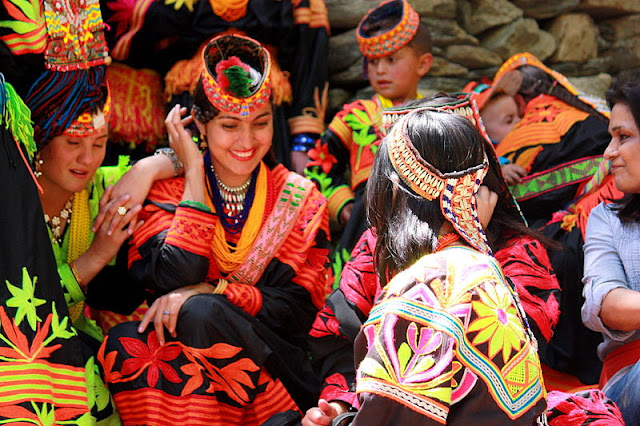Travel and culture of Kailaash Valley (Pakistan)
Culture and excursions of Kailash Valley
Kalash (Kailash Valley
Kalash is a tribe located in the Hindu Kush Mountains in the Chitral District of Khyber Pakhtunkhwa Province. This tribe speaks the Kalash language which belongs to the Dardi language family. This language is very popular in this region.
Reason for naming.
According to linguist Richard Strand, the tribes living in Chitral district have borrowed the name from ancient Kafiristan. The Kalasha or Kalash tribes increased their influence in Chitral over time. It is also said in one passage that the name Kailash was actually "Kasavo" which was later used as "Kasio". This name was reserved by the tribes of Nuristan for the tribes settled here. In later periods, the name Casio became Kalasayo and gradually became Kalasa and then Kalasha and now Kailash. [Citation needed]
Culture
The culture of the Kailash tribes has the most distinctive features among the tribes settled here. Their culture is very different from the local Muslim population in every way and tourists from different parts of the world come in large numbers to the Kalash Valley to see this culture. These tribes religiously believe in many gods and their lives are influenced by nature and spiritual teachings. According to the religious traditions of the tribes here, the custom of offering sacrifices is common, which is considered a guarantee of prosperity and peace in their three valleys. The various traditions known among the Kailash tribes and many historical references and stories are generally compared to the culture of ancient Rome. Although the influence of ancient Roman culture has diminished over time and is more pronounced today, the influences of most Indo-Persian cultures are evident. [7] Started getting good results. Kalash culture has been declared an international culture by UNESCO.
Custom.
There were differences in the tribal customs of the Kailash tribes. Traditions were very widespread here before the twentieth century, and in the last century the practice of these traditions among non-Muslim tribes has declined significantly since the conversion to Islam. There are also mosques here. About three thousand Kailash have converted to Islam or their descendants have become Muslims. These people still live in the Kailash Valley and follow their own language and ancient culture. Now these people are called "Sheikhs" and these people, who make up about half of the population of the Kailash tribes, have their own separate influence. Can't live We have a very strong sense of identity. "
Kailash women wear long and black dresses, which are decorated with oysters and pearls. They are called black in Chitral because of their black clothes. Kailash men have adopted the common dress shalwar kameez in Pakistan and Pakistani dress is also commonly used in children.
Unlike in Pakistani society, social interaction between men and women is not considered bad. Bashilani is a separate village reserved for women. Only pregnant women are required to live here and the children born are called Bashilani. After the birth of a child, women must be chaste, and it is a common custom for a woman to return to her husband. [10] Men are also a key part of this custom.
The custom of running away from home and getting married is common. Teenage girls and married women also run away from home. Most of these tribes consider this attitude to be general and in this case it is accepted on the occasion of celebration. On several occasions, riots break out in the sub-tribes on this issue. Bitterness persists until peace is established and peace is usually not reached without the presence of a mediator. According to the common custom for reconciliation, the man with whom the woman escapes pays a price to the woman's family or first husband. This cost is usually equal to double the cost that the woman's husband pays for the marriage and the woman's family.
The museum and school in the picturesque valley of Bamburt have been built in collaboration with a charity called Gray Volunteers. Local councilors are playing a key role in preserving the culture and working with the local community to cover the cost of the community school in the building.
























Best!
ReplyDeleteVery nice
ReplyDeleteVery nice
ReplyDeleteGood
ReplyDelete